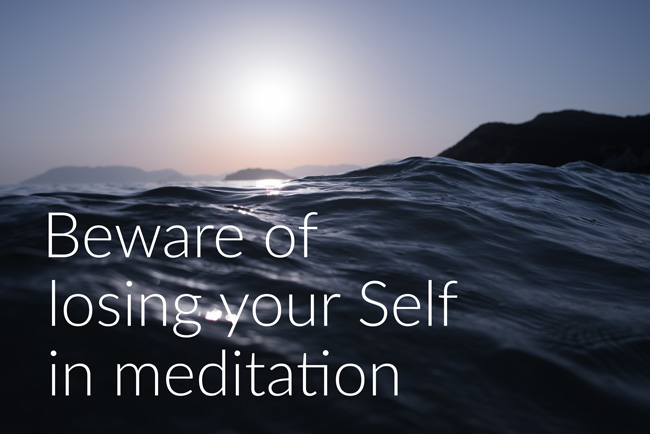This website uses cookies so that we can provide you with the best user experience possible. Cookie information is stored in your browser and performs functions such as recognising you when you return to our website and helping our team to understand which sections of the website you find most interesting and useful.
Is Meditation Dangerous?

One of our students recently wrote to us asking our thoughts about the possibility that meditation is dangerous. She quoted an article that describes the experience of people who had reported that engaging in mindfulness-based meditation resulted in the following negative experiences:
- strange, persistent and obsessive thoughts
- the sense of depersonalization
- extreme sensitivity and vulnerability
- a feeling of being exposed
- anhedonia – the inability to experience pleasure
- lack of meaning and joy
- loss of direction
Like anything in life, meditation can cause problems when it is misused or misunderstood. If you don’t approach meditation with the correct preparation and attitude, you can become excessively introverted and psychologically disturbed. It’s also possible to develop physical symptoms such as digestive problems, joint stiffness, muscle pain and metabolic imbalance.
Yogic perspective on the dangers of meditation
From a yogic perspective, these symptoms are described as an excessive activity in the Ida Nadi, the left-hand channel that runs along the spinal chord, which carries mental energy. There are three energy channels running along the spine: ida nadi carries mental energy, Pingala Nadi carries physical energy and Sushumna carries spiritual energy.
For meditation to be successful it’s important to balance ida and Pingala nadis, the mental and physical energies, otherwise, your brain and mind can become over-stimulated, and depleted.
Common meditation mistakes
As the tradition of learning meditation in a structured learning path gives way to the desire for convenient enlightenment, new meditators fall into traps by:
- diving into advanced meditation intensives or retreats, unprepared
- adopting an inappropriate style of meditation for her mind-body type
- meditating for hours on end in search of an epiphany
- believing that meditation can fix life and cure all ailments
Teaching meditation in a therapeutic setting
Dr. Swami Shankardev says:
In my yoga therapy and psychotherapy practice I have seen clients who have had disturbing experiences in meditation. I saw one client who has suffered an acute psychotic breakdown due to extended hours of very intense meditation. He was also a drug user. More commonly, I see patients who exhibit feelings of anxiety that arise during relaxation practices, or people who are meditating for too long or struggling with deep inner conflicts.
I treat the majority of my patients with various meditation techniques and psychotherapy tailored to their needs. Quite often, I teach my clients the knowledge and technique of Ajapa Japa meditation, because of its manifold benefits of relaxing, grounding and centering. Later, I introduce mindfulness meditations, once they have developed a solid inner center from which to view any confronting mental content.
How problems arise in meditation
The majority of problems arise when pre-existing conditions have gone unrecognized, ignored, or when meditation is used to suppress physical, emotional, or psychological issues. While it’s natural to want to escape issues and quickly gain inner peace, we need to know how to manage our mind rather than attempt to run away from it if we are to achieve a more empowered and enlightened state.
The core problem is not meditation but the pre-existing condition that meditation triggers.
What is a healthy meditation routine?
A healthy meditation routine balances the passive forms of meditation such as pure mindfulness with relaxing and energy balancing meditations, such as Ajapa Japa or Prana techniques.
It is essential to balance all forms of meditation with physical activity and exercise such a yoga asana as this creates extroversion.
This will balance Ida and Pingala Nadis.
How long should you meditate for?
The general formula is 20 to 30 minutes of meditation to 8 hours of physical activity. This balances various neurological and hormonal changes that take place as a result of meditation.
Knowledge makes meditation safe and effective
Meditation is part of a larger system of self-development that ideally requires some theoretical training, changes in lifestyle, and strengthening of the body so that we can sit for a period without strain.
Meditation techniques like Ajapa Japa balance physical and mental energy because they are not passive. They are active techniques that utilize the breath and energy to create a more balanced and centering practice. Once these energizing meditations are established, then mindfulness practices are more effective – you can actually sustain mindfulness. Once again, we need physical activity to balance all forms of meditation.
We advise students never to rush their process or to be hungry for fast enlightenment. The important thing is to remain self-aware and not get caught up in inexperience.
We place a strong emphasis on knowledge. This is why we have started our meditation theory and practice courses because knowledge drives the technique. Practicing meditation techniques without knowledge is like getting in a car and driving without knowing how to drive, the road rules, and most importantly, your destination.
Share
Latest Posts
Meditation
Yoga
Wisdom
Chakras
Get Wellbeing and Wisdom Updates
"*" indicates required fields

